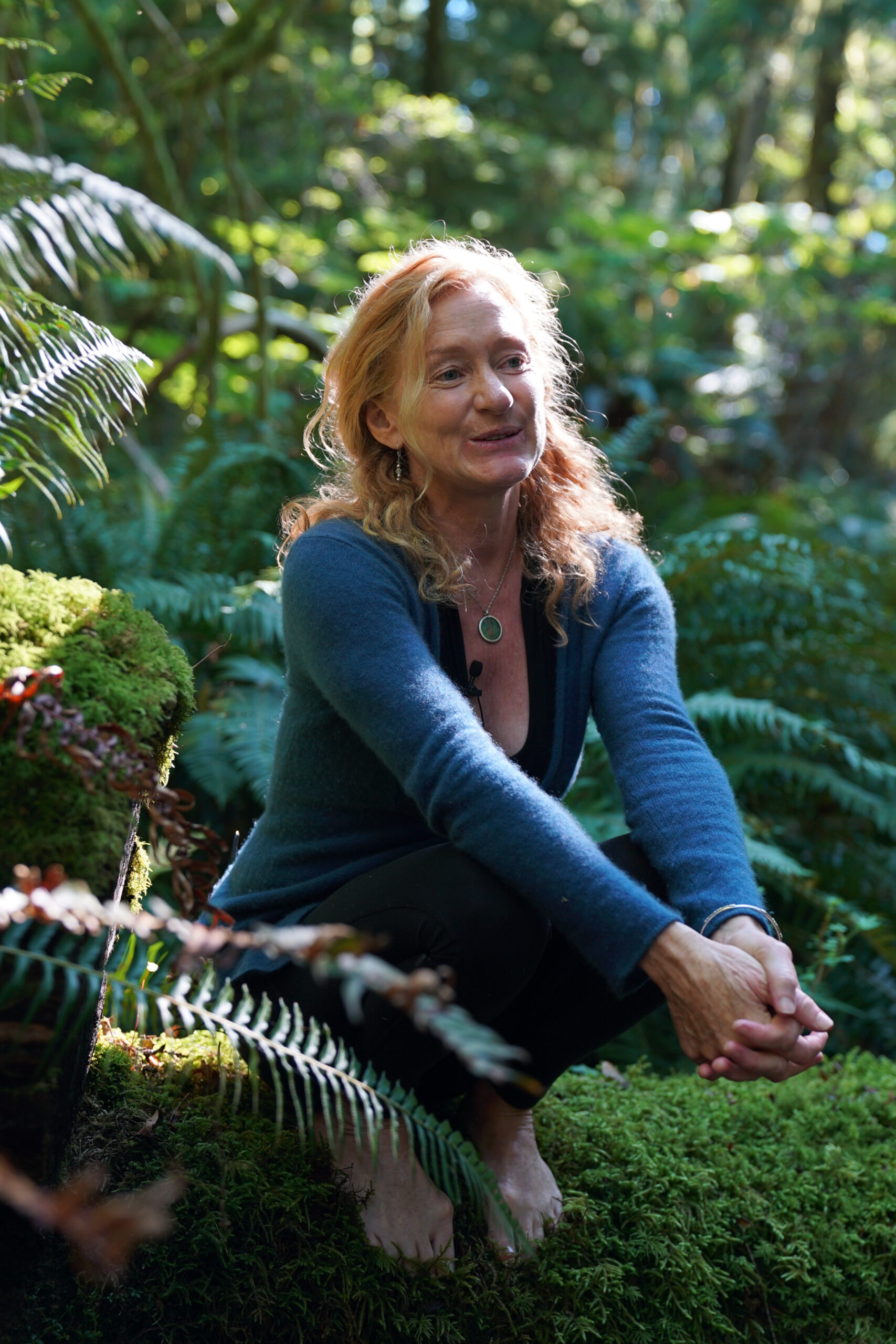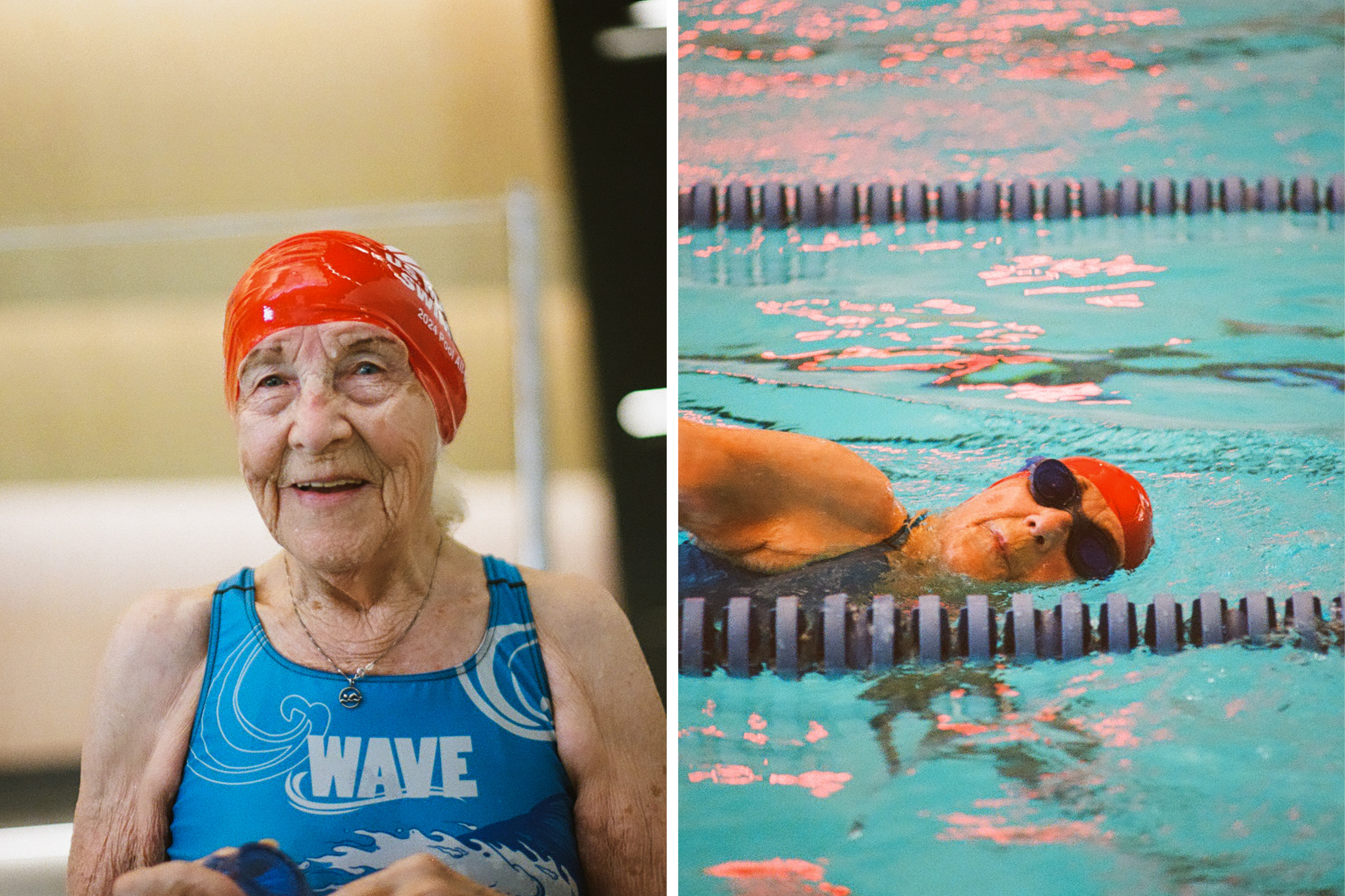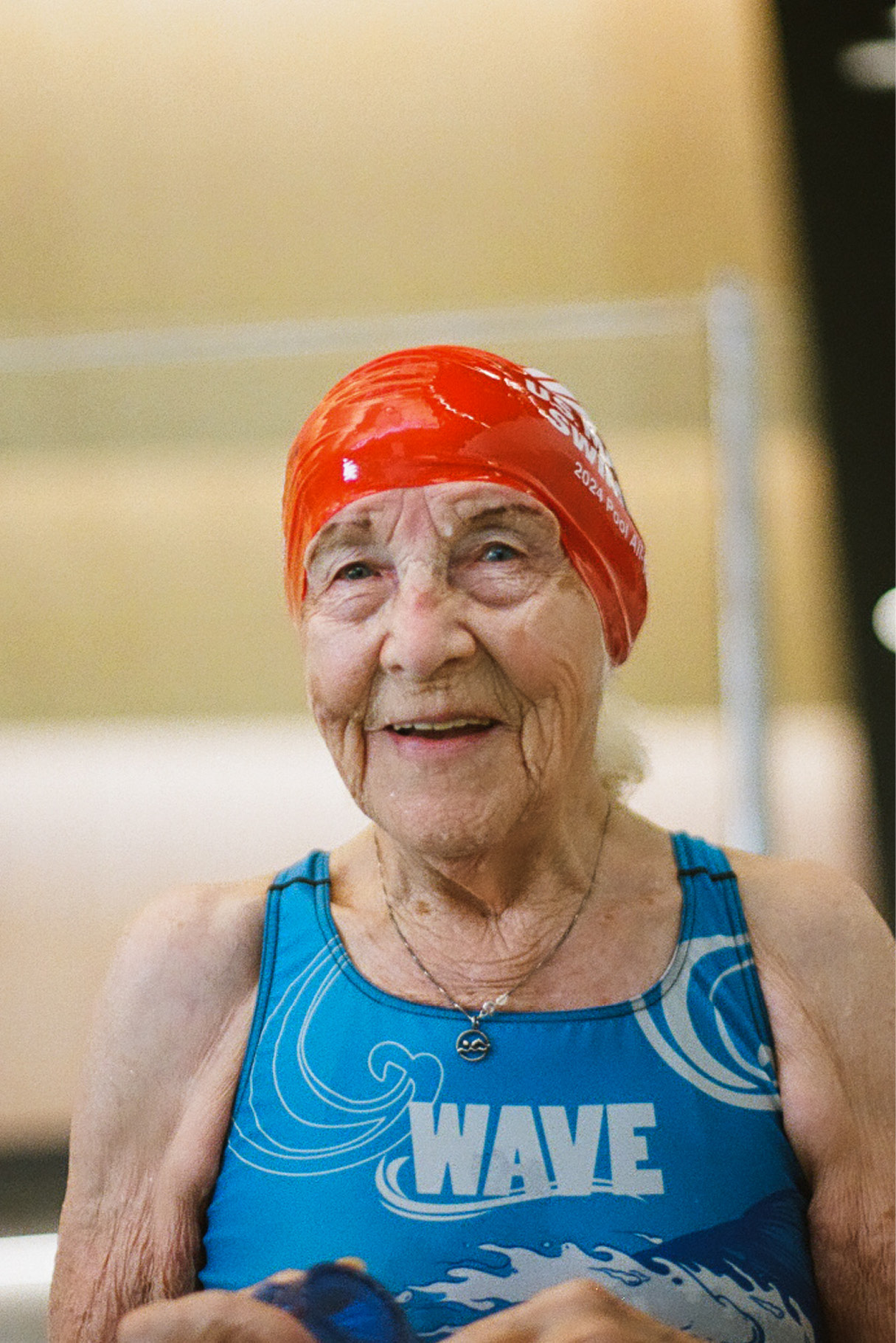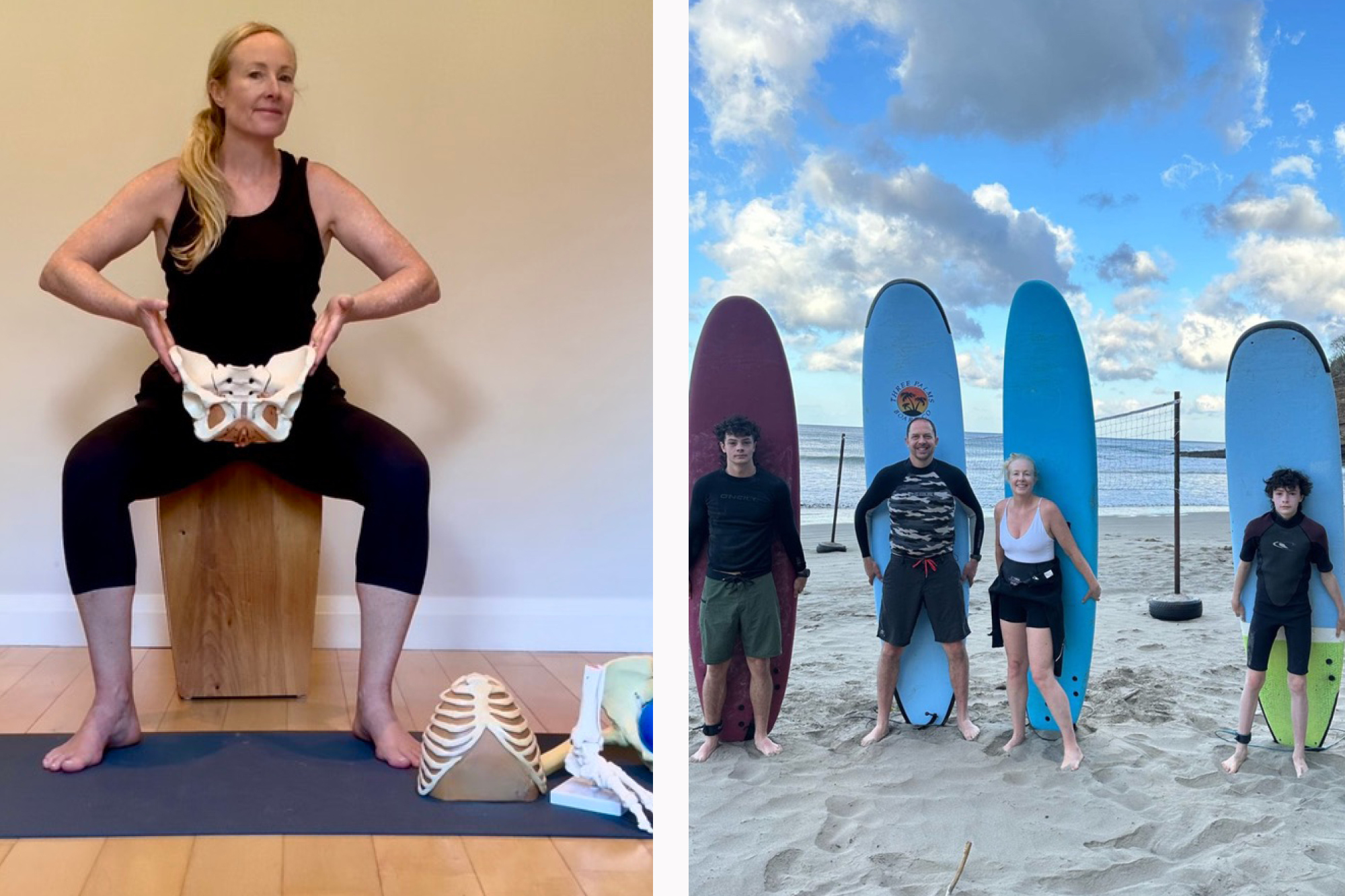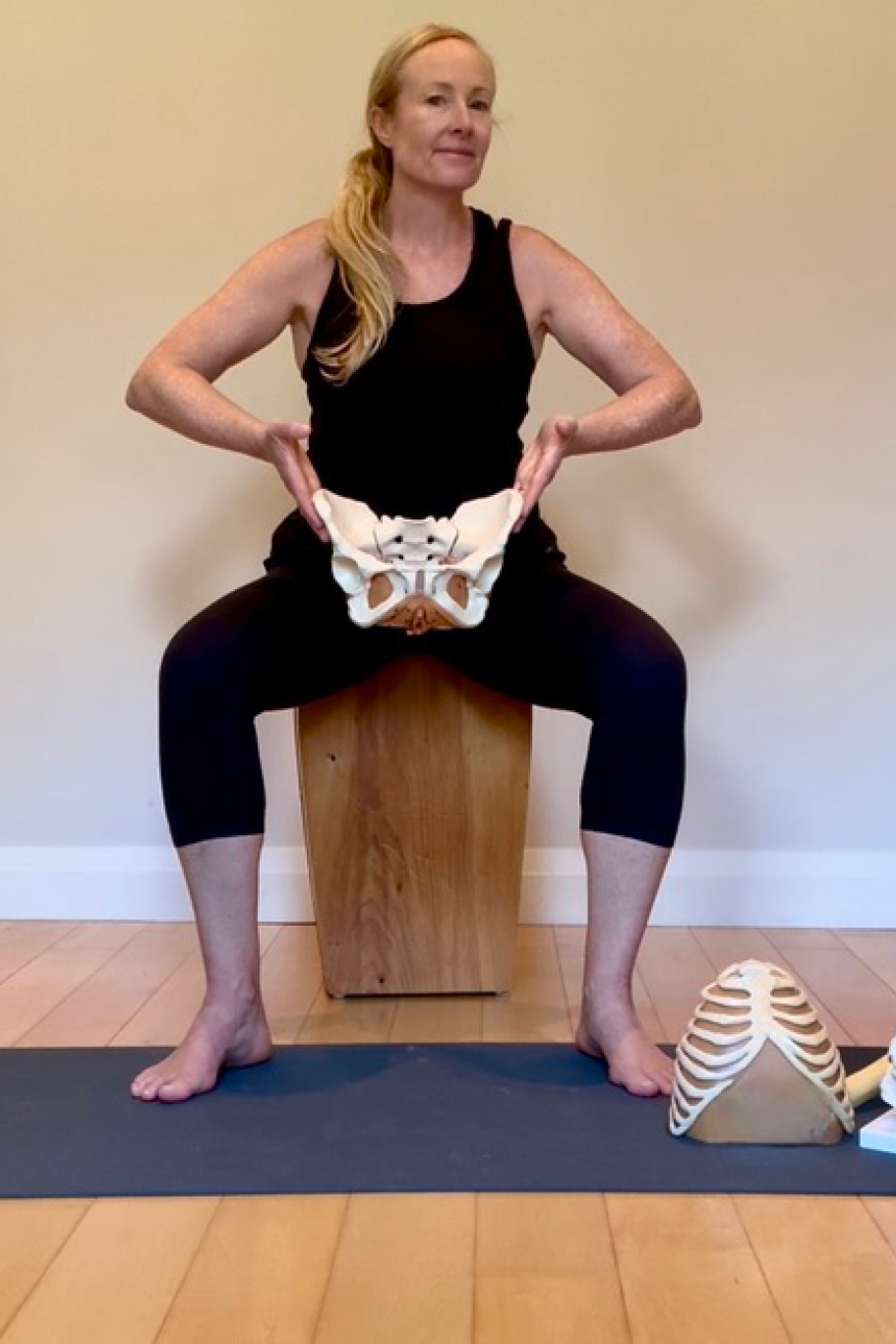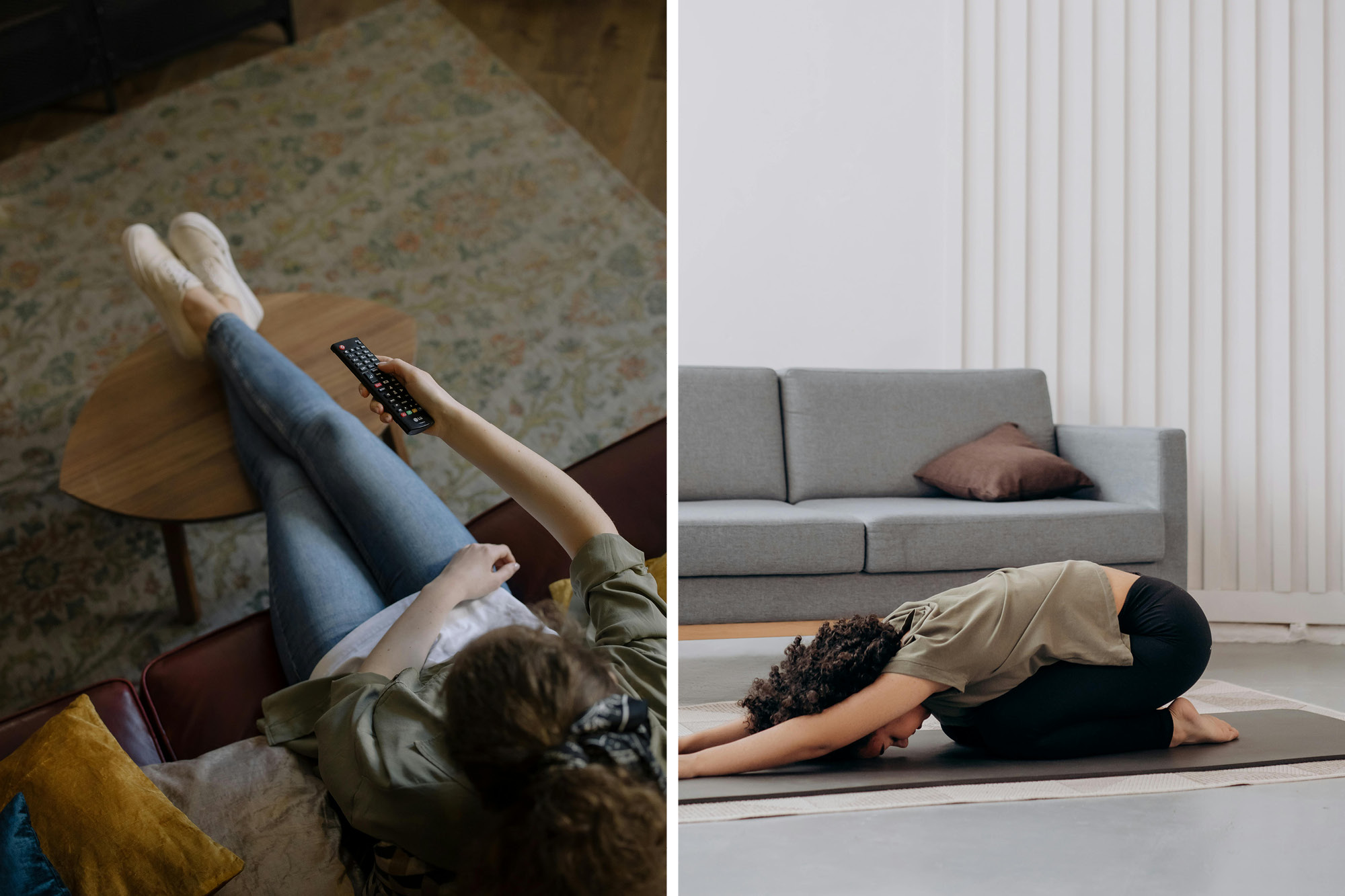It’s a sunny winter morning in Vancouver. Kate Potter, yoga teacher for more than 30 years, has made the ferry trek to the city and is waiting with a warm cup of black tea for me when I arrive to meet her. She settles comfortably into a chair cross legged, ready and graciously open to talk about her life of movement, the joy of gardening, aging, recovering from a recent surgery to treat severe back pain, and caring for yourself amidst the demands of the world.
At 62, Kate is living a quiet life on Gambier Island, located in Howe Sound near Vancouver, where she and her partner Don built a house 11 years ago. She spends her time teaching yoga classes and workshops on the island and over Zoom, connecting with her community, exploring nature, and generally moving at a more measured pace, though adventure is always on her mind.
***
Johanna Richardson: Tell me, what does a ‘day in the life’ on Gambier look like for you?
Kate Potter: I get up at 5 a.m. and I usually do about two hours of yoga. And then I do yoga with Don for about 20 minutes and then we sit in meditation for another 25 minutes or so. In that period we’ve also had tea and coffee. I always get a walk in, especially now that I’m well with my back. I try to get those 10,000 steps or whatever it is, but there’s different types of walks throughout the year. Right now the fish are spawning down at Whispering Creek, so that’s a good 10,000-step walk. There are also walks up to the new logging area. I’m always just so charmed by the tree line—the difference between forest and open land and what that tree line represents. There’s mystery there. That’s probably a 20,000-step walk, and it’s beautiful. It has been logged, but it’s old cedar, fir, and balsam. Pretty rich!
If it’s summer I always try to get into the forest for a forest bath, and if it’s spring, we probably won’t get around to walking. There’s just too much work to be done at the property. We have a vegetable garden, orchard, and a flower garden. Everything needs attention. So we’re always working. In the fall, we’re harvesting and canning. The restful season is winter, which we’re in right now. As soon as I get the last of my dahlias out, there’s no more work to be done in the garden.
Johanna: When you think about your personal self-care and wellness routines, is that mainly yoga for you or are there other things that you do just for yourself?
Kate: There are things that have to do with the seasons. Taking Sesame oil is a big deal for me. It’s an old Ayurvedic remedy. I scrape my tongue every morning. I do apple cider vinegar in the morning, and a bit of honey. I’m pretty alert to the fact that I need calcium because I’m in osteopenia (that first stage of osteoporosis) which is really common for women my age. What we need to do is to get collagen and bone broth. These kinds of things have become really crucial, as well as yoga of course. Taking time to cook and eat properly is important, and making sure that I have a lot of fluid. Every single system in the body needs fluid.
Another thing is to try to limit the amount of time on a phone. I usually put a timer on it. It’s easy to do … you just look at your phone and say, ‘okay, well, I’m entering Facebook world or Instagram, and it’s 11:40 a.m. So at 12 p.m. max, I have to be off this phone.’ If other text messages or notifications come in any other way, I’m aware that I’ve entered that world. Otherwise, you could use an hour up, no problem, and go down rabbit holes that are maybe interesting, but not productive.
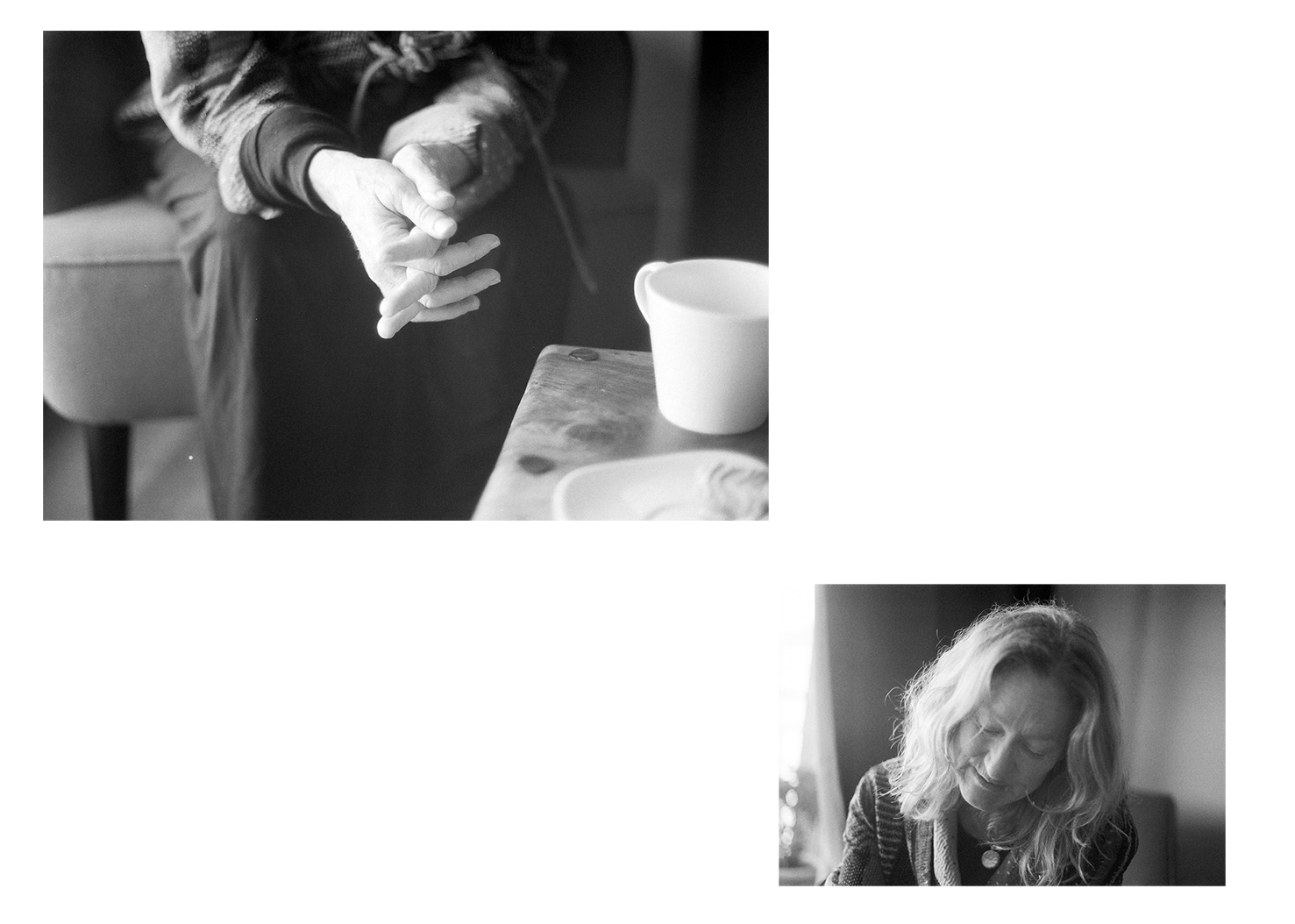
Johanna: When you’re away from home, what are the things that you do to maintain routine or keep feeling like yourself?
Kate: Luckily I don’t have to travel to work too much anymore. I try to not do too many things. It’s natural to say, ‘Oh, I’m going to town. Let’s go for coffee. I’ll meet with you for a walk.’ I try to say no as much as I can, or at least say, ‘Can I get back to you?’ Overscheduling is a habit pattern, and then you have to get out of things and use all this energy going back and forth. Don’t over schedule!
Try to make your time away from home just as disciplined as being at home. When I’m away from home, there’s not a day that I won’t do a yoga practice. If you’ve committed to doing a daily practice, well, it’s got to happen while you’re on the road! It should be the very first thing that happens, because everything else will follow. Maybe it’s not the first thing in your day that you do, but it’s the first box that you’re aware that you’re going to tick. That’s going to take care of your circulation, blood flow, and breathing. It’ll keep you sharp.
Make sure that you eat relatively well. You have to keep a hold of some basic stuff that you do, because otherwise, it’ll be like all bets are off—you’ll feel like ‘I just blew it, so I’m going to keep blowing it.’ Get a schedule and stick to it.
Johanna: What have been the types of movement practices that have brought you the most joy recently?
Kate: I’m really getting into using the wall. I thought about it as a sort of a focus for teaching for my Gambier [yoga] classes because we have a big hall and there’s a lot of wall space. So because I’m teaching it, that means I’m really focused on it in my own practice, and it’s really fun. It’s great to be facing the wall and moving into the wall, or facing away from the wall, or using the wall for deep squats and to have all that balance with your back. Because my back is different than it was before surgery, I’m losing the articulation and to have the feedback from the wall is super fantastic.You can do really simple core strengthening things where you’re laying on your back and reaching behind, and putting your hands on the wall. This kind of lifts your ribs up, and then just by pushing the ribs down and keeping your hands pushing into the wall, it activates your core. There’s a million things that you could do in that position and the feedback is there, not only from your hands on the wall but from your breath through the floor.
Johanna: The wall—that’s such a cool prop to play with and something that everyone has access to!
Your surgery was last winter, is that right? What has that been like recovery-wise, and how have you managed your way through it?
Kate: Out of the gate, I had a super high recovery rate for the first 2-3 days, and then unfortunately one of the bones that had been screwed into broke and fell out onto a nerve, so they had to go back in for a second surgery. I had to get psyched up for that surgery again … and then there was some thought that they might have to go into a third surgery. There were complications and blood pooling, so it was all very intense. I couldn’t believe how frail I was, even at my age … and how hard it was to be in that situation. Once I was out of the hospital, and I got my bowel and bladder back, that was the first thing. As soon as that was back, I was on my mat right away without any question. That sure helps because you gain confidence. I knew what I could and could not do.
Now, that area in my back is so stable. I feel so tall. I know people think I’m really short, but I don’t feel that way. I feel big! The fact that I had to shrink down and crouch for so long to protect the scoliosis and damage in my back, to have it all come back to this, it’s like, ‘Whoa, I feel strong!’
“If you’ve committed to doing a daily practice, well, it’s got to happen while you’re on the road! It should be the very first thing that happens, because everything else will follow.”
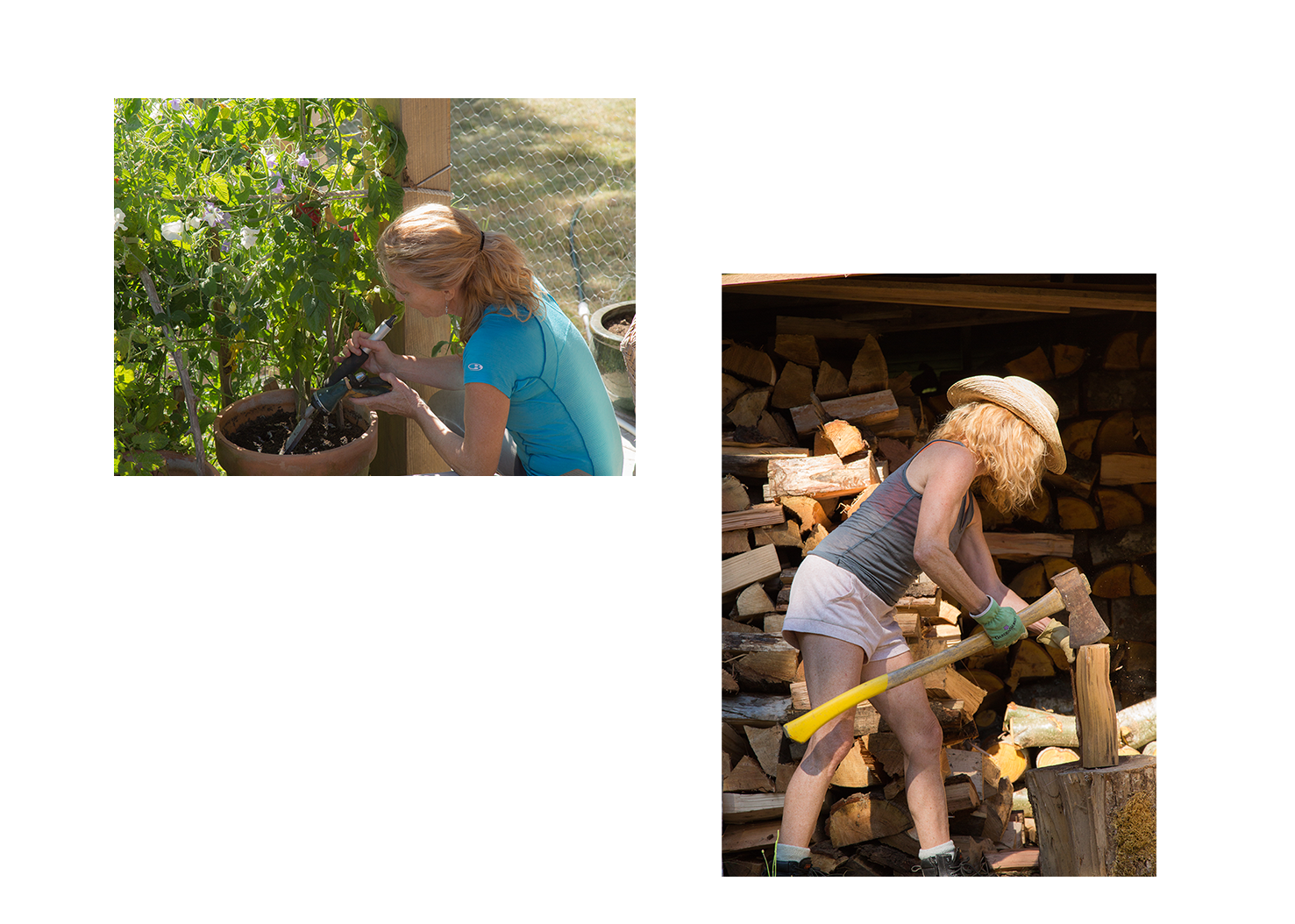
Johanna: Strength, as you were saying, is crucial for your body as you get older. How has your practice changed to incorporate more of that?
Kate: I do simple things—repetitions, like lots of push ups. I’ve been doing push ups against the wall, thinking of people that don’t have the ability to do push ups on their knees. I am given to long, slow, stretching poses on the floor, but I have to remember strength now. I’ve actually got to do my standing poses. It’s just those little reminders.
Push ups are good because it’s core too, and you can do them in a couple different ways. I mean, you could do them just straight, or from a cat lift position and keep your elbows in so that it’s strengthening the anterior deltoids. If you do them in the regular way, you get a little bit more pecs. Or you can do them with arms wider. You just keep varying. You’ve got all these modifications, and it’s just one easy movement.
That’s a problem for a lot of people my age and older—they don’t relate to the floor. A lot of people can’t get up from the floor without worrying about hurting themselves. I think it’s great if you have a grandkid and you just get down on the floor with them, however we can get ourselves on the floor! I like to wash my floor on my hands and knees. That’s maybe a little bit extreme, but it’s so good. It’s like suddenly you’re doing a chore. And it’s a chore that is so old, as old as our grandmothers and great grandmothers, and it’s universal. Or I’ll do my sweeping in a squat—I do a lot of gardening like that.
Johanna: How would you encourage or advise people to continue moving with chronic pain?
Kate: The thing is, with chronic pain you’re not going to get out of it by not moving, but there’s some chance you will get out of chronic pain if you do move, even just for a portion of your day. If you do too much, we know that that will trigger you and there’ll be more pain. So it’s just about finding the right recipe. If you have enough patience to figure out what that recipe is, or if you have somebody help you with your recipe, there’s a really good chance that you’re going to not only get out of chronic pain right now, but you might be able to experience an arc and get completely out of it.
There are situations that you just don’t think are ever going to change. You’ve had it for so long and you’ve just lost. You’ve lost hope. But it’s completely possible to have been in pain for 10 years, 20 years even, and then get out of pain completely. I would not have the confidence to say this if I did not know it to be true. I do not have chronic pain now, and that’s after a long period of fibromyalgia, which is a chronic pain condition. Then there was that crazy meningitis situation, which created an infection in the bones of my back, which created arthritis. That was another 3 or 4-year period of chronic pain.
Now, I do not have chronic pain. I mean, I might have the odd headache, or I’m stiff. Stiff is great. I think some people think that stiffness is pain, but that’s different. It’s not the same as pain, like searing pain, hot pain, crackling pain, driving pain, or cutting pain. That’s just the sensation of stiffness. Stiff is normal. If you’re stiff, keep moving. Do micro-movements, little rotations, and get your body juiced and oiled.
Johanna: Going back to those years when you experienced terrible chronic pain, how would you shift your practice and your day to allow for some movement while still honoring that you were in pain?
Kate: Have official bed days. Have bed days where you just say, okay, this is a day that my computer’s coming to bed. My tray with tea and food is coming to bed. My yoga is happening in bed. My book is coming to bed with me. Have those as special days. Today’s a day where, guess what? I’m canceling. I’m allowed to be here. It’s comforting and it’s warm and it’s cozy, and I’m not going to read the news on my phone. Protect yourself. Tuck in. It’s the things that you don’t think about. You think, ‘I’m at home, I’m resting,’ but then you’re not actually resting your full self or allowing your mind to stop. That’s all affecting your nervous system, your brain, and your musculature. It’s all connected.
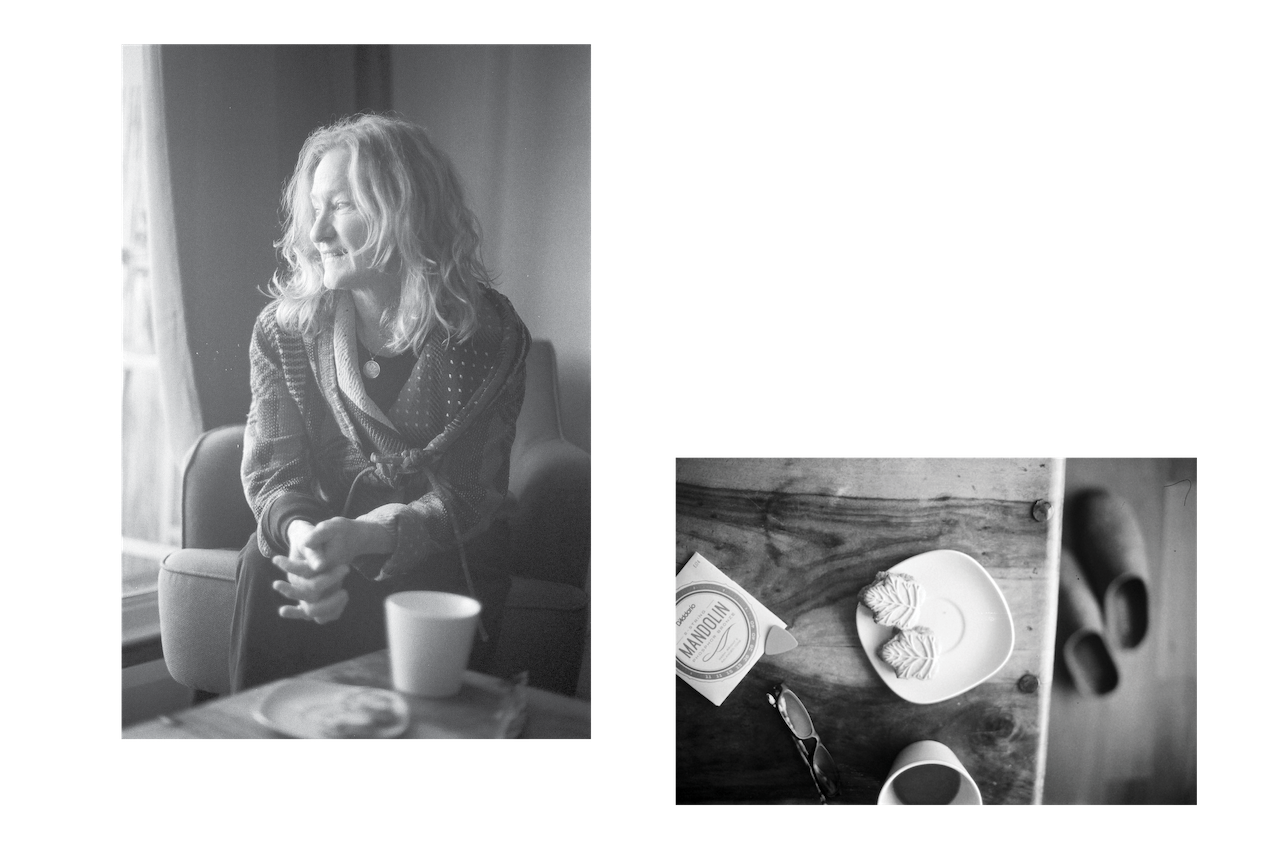
Johanna: As women, we go through periods where we feel disconnected from our body, whether it’s going through pregnancy or recovering from having a baby, going through perimenopause, or recovering from surgery. How can people return to that sense of connection so that they can continue to move more intuitively?
Kate: The simple answer—the big answer—is breath. To learn how to exhale, and to feel the exhale, and to make a little bit of sound with it. It can be your gateway, your return. Then just keep returning to that. It’s hard to actually be connected to the body. We talk about it as if it’s some easy thing, but it’s such a puzzle. So, give yourself a break. Just try to take a baby step. ‘Okay, I’m just going to learn how to exhale and feel my exhale. And then when I inhale, I’m going to try to see if I can feel calmer too.’ We breathe thousands of times per day and we never think about it, but as soon as you do, you feel your chest expanding and the muscles in between your ribs and you feel your neck kind of loosen. It is such a simple thing.
Pay attention to teachers who are passionate about the body–we’ve got a ton of them on our Movement channel. One of them is going to be a fit. If you like soft and warm and kind of easy, then you come to me. If you like interesting and physical, go to Adrian [Gaskin]. There’s all these different ways to go. I am just so aware of people not knowing what their body needs or feels. [Visit the Classes by Kate Potter collection.]
There might be a little bit of a learning curve to realizing that you’re on your own side. You’ve got to keep saying, ‘I’ve got this, I’ve got this. I’m with you. I’m for you.’
Johanna: It’s so common for people in midlife to feel like they’re suddenly caring for themselves in ‘a new body’ of sorts, but then also caring for parents, and I know your mother has had some health problems as well. For you, and in thinking about your friends, your family, how do you care for yourself while caring for other people?
Kate: That’s a really good, important question because it would be directly personal to everyone. ‘How are you going to do this? This is going to happen.’ I think we fall into the trap of trying to feel somebody else’s suffering in order to feel how bad that might be. We try to feel like, ‘Oh, mom, that must hurt so much. You must be so lonely. You must be feeling so insecure.’ We go over to the other side in order to feel compassionate enough. But I think that can be a mistake because suffering is just completely unique to a person. We don’t know what it’s like to be anybody else, and if we think that we have to jump into the hole with that other person, then there’s nobody up there on top to throw down a rope.
When my dad was in a care facility in Victoria, he was in a locked wing where everybody had dementia. I would enter into their realm, and I remember I tried to dress brightly. You’re already quite bright because you’re young and alive, but then I’d wear something really bright, and as I’d walk down the hall, I’d see people smiling or starting a conversation. It’s a big lift. You never know when you’re affecting somebody with just a simple gesture, so taking care of yourself is taking care of somebody else.
If you could just think of it as: ‘I’m entering this whole phase of life where I’m going to be the caregiver. I’m going to do everything that I need to do so that I’m the calmest, healthiest, and the most joyful that I can possibly be.’ Then the job of taking care of somebody, I mean, it could turn on a dime. I know it. It can be very thankless, but at least you have cared for yourself first. Maybe it’s across the board for everyone, or maybe it’s a little bit more with women, that we end up being really generous with our time and our energy and our abilities, and then we kind of resent it.
Johanna: What returns you to a healthier place?
Kate: It’s just that awareness that I’m going to do it again. It’s like, ‘Okay, this is my pattern. That’s my habit. I’m doing it again. I’m committing to do something that I can’t afford to do.’ Energetically, get out before you’ve overcommitted. Turn around, walk away. I have gestures. I hold my hands out and say ‘Stop!’ That is a good one for me. It’s a Buddhist practice. Stop. Let it go. Stop, release. Stop, release. It’s just like a stop sign. Just pause.
I think, ‘Let’s just tend to what we can control.’ There’s so much we can’t control, so let’s just control the things we can control. I can control my breath. Let’s just tackle that one today. Just today. I can control what nutrients I intake. Let’s do that. I can control how much time I say I’m going to give to this particular person. Do that.
“To learn how to exhale, and to feel the exhale, and to make a little bit of sound with it. It can be your gateway, your return.”
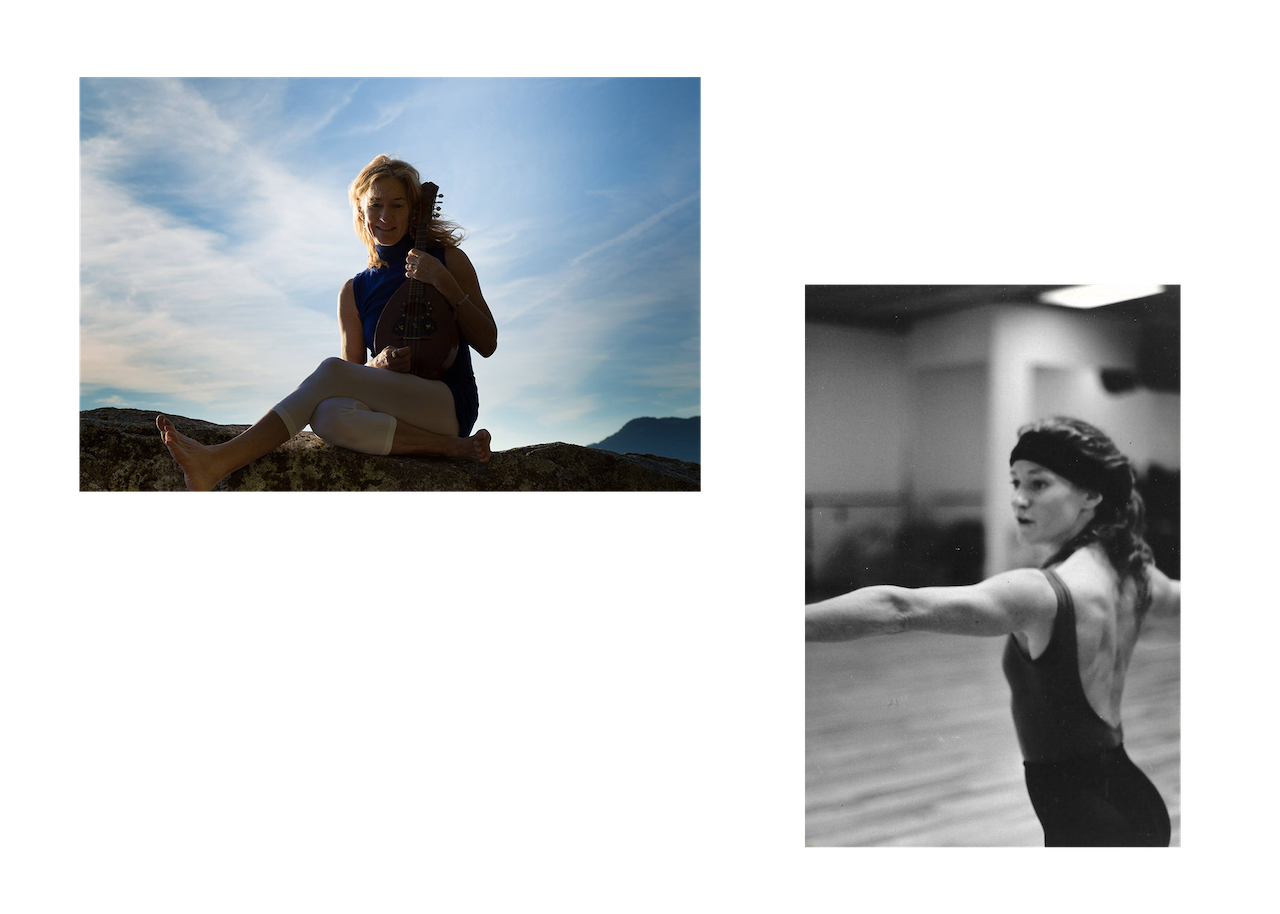
Johanna: What are some things that you’ve been enjoying recently?
Kate: I really love making kombucha. I’m really into that. It’s an alive thing and it’s always different and changing. I love problem solving on the sewing machine and making ukulele cases. I think they’re maybe the nicest thing I’ve ever made. And then, of course, music is my ongoing thing. [Kate is currently in a Vancouver-based band and plays mandolin.]
Johanna: It can be hard to pick up new hobbies at any age but especially as you get older. What would your advice be for those who want to try something new—whether it’s movement, a creative hobby, or something else—but have a hard time taking that first step?
Kate: Do the same thing at the same time every week. Pick something that’s interesting and find a person who does it with extreme interest. It’s not just one more thing that they do. I wouldn’t suggest taking [a class] by me unless it’s yoga. To study with somebody who has done it for a long time, you’re going to learn and you’re going to be enthused because that person’s so interested in what they do.
Johanna: What would you say living in movement means to you?
Kate: It’s just so easy when you’re a mover, I guess, to be living in movement. Even if I am cleaning or cooking, I’m aware that I’m moving. I think living in movement is the creativity piece for me.
Johanna: Creativity in movement is so important. Are there any other words you think of when you think of movement?
Kate: I recently saw a photograph of someone jumping out of an airplane, and they had one of those [GoPro] cameras on and I have been obsessed with the idea. I just couldn’t believe that that’s what it might look or feel like to be free-falling. You’re not actually doing too much movement, but everything else is. I don’t know if I’d have the guts to do it, but if you asked me if I had done anything unusual in terms of movement, I would like to report back that I jumped out of a plane. It’s definitely about adventure for me.
It might be unusual, but I think people should do things a little bit more by themselves to feel the adventure of things. It’s almost like when you’re a kid and you used to go on little adventures in the forest or go swimming by yourself. ‘Here I am down at the beach and there’s nobody around. I’m going to go in without water, going to open my eyes underwater. It’s going to be really cold.’ And that’s an adventure!
Live well and age better with your weekly 10-minute wellness habit. Join Movement Living to get your free wellness newsletter, delivered every Monday.
“Do the same thing at the same time every week. Pick something that’s interesting and find a person who does it with extreme interest.”

